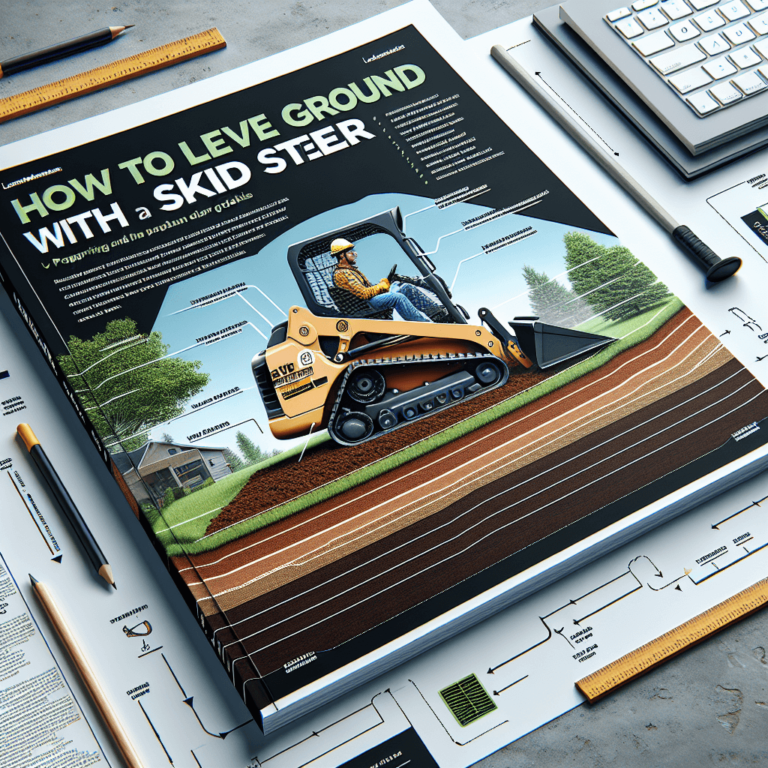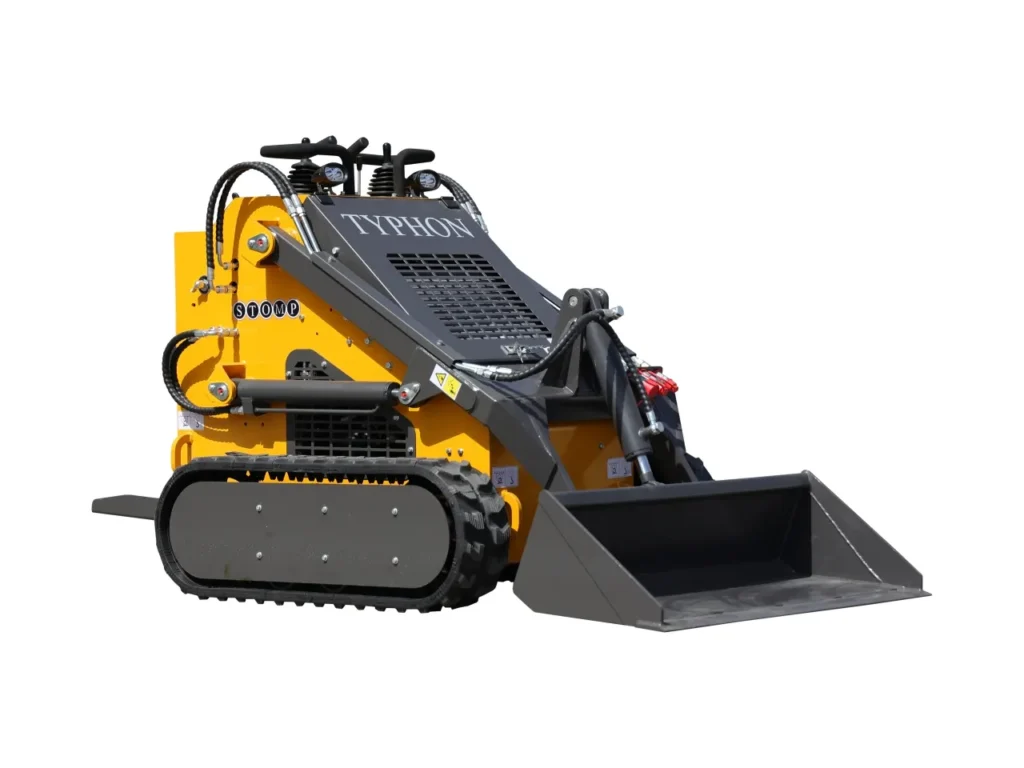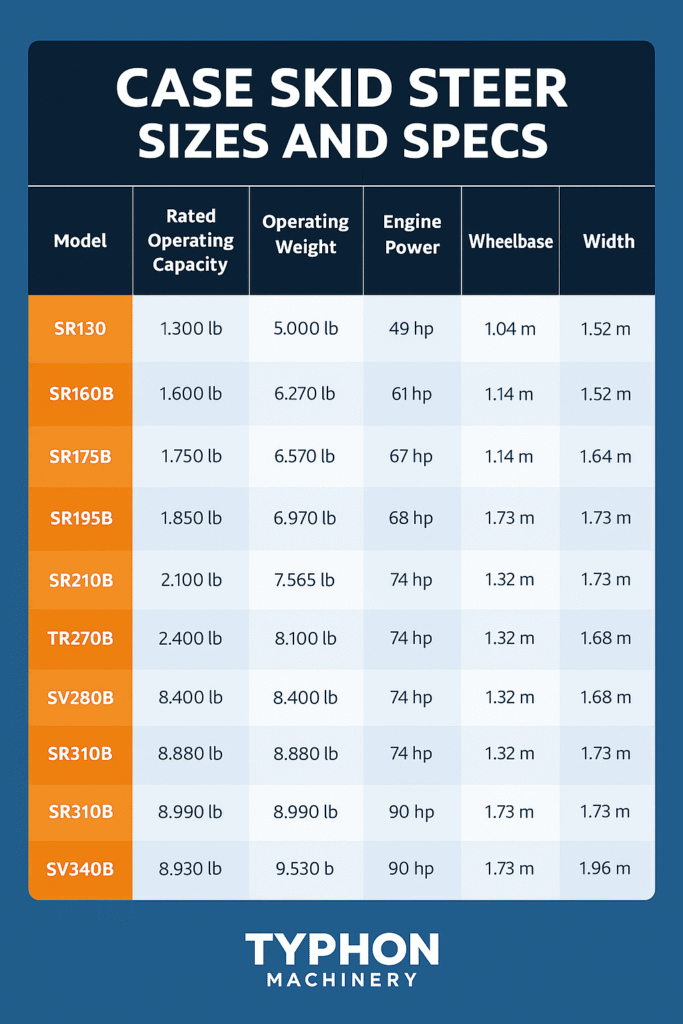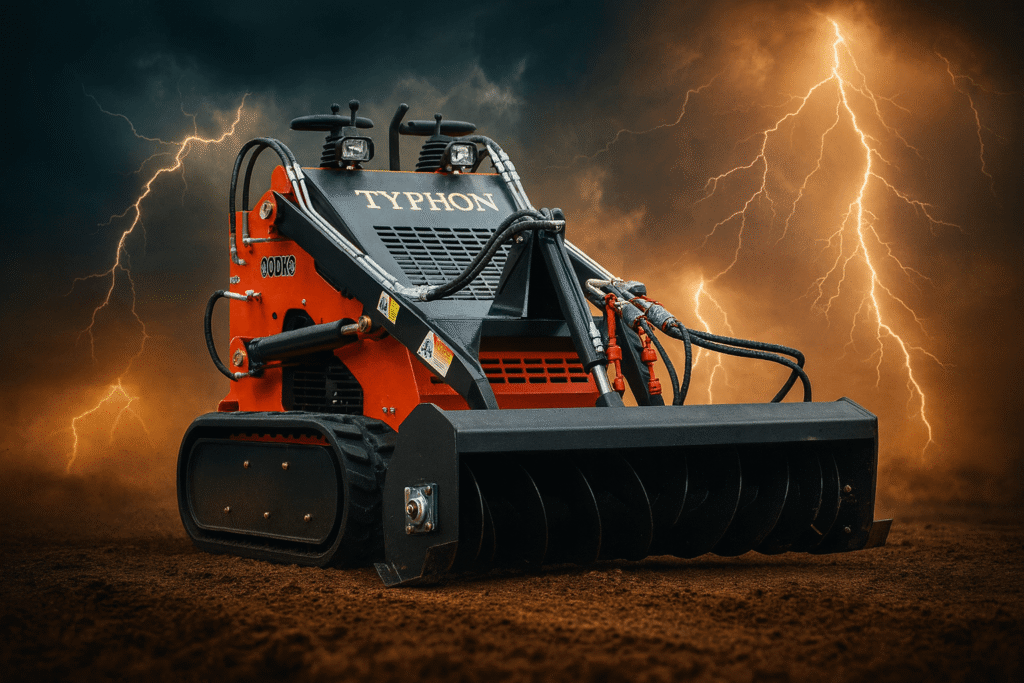Leveling ground is a crucial part of both landscaping and construction projects. Whether you’re creating a smooth surface for a new patio, preparing land for a building foundation, or leveling an area for a playground, precision is key.
Enter the skid steer—a powerful piece of machinery that can transform uneven terrain into a flat, ready-to-use surface with remarkable efficiency.
In this blog post, we’ll guide you through the process of leveling ground with a skid steer, offering expert tips and practical insights every step of the way.
Introduction to Leveling Ground with Skid Steer
Leveling ground is more than just an aesthetic choice; it’s about functionality and safety. Uneven surfaces can lead to structural issues and pose safety risks in both residential and commercial settings.
Skid steers are compact, versatile, and equipped with powerful attachments that make them ideal for this task. In this guide, we’ll explore how to use a skid steer to achieve a perfectly leveled surface, even if you’re starting from a steep slope or difficult terrain.
Basics of Leveling Ground: Importance and Applications
Leveling ground involves creating a flat surface across an area, correcting slopes, and addressing unevenness. This process is essential in various applications, from creating a level base for construction projects to preparing land for landscaping designs.
Before beginning any project, it’s important to consider factors like soil type, drainage needs, and the natural slope of the land. Understanding these elements will guide your approach and help you avoid future issues.
Do Skid Steers Work Well for Leveling Ground?
A skid steer is an excellent choice for ground-leveling projects for several reasons:
- Maneuverability: Skid steers are compact and highly maneuverable, allowing operators to navigate tight spaces and intricate terrains with exceptional ease. This is particularly advantageous in urban environments or around existing structures where space is limited.
- Versatility: Equipped with a wide array of attachments, skid steers can be tailored to specific tasks. Whether you require a grading bucket for smoothing surfaces or a laser grading system for precision leveling, the adaptability of skid steers makes them suitable for various leveling applications.
- Power and Efficiency: With robust horsepower and advanced hydraulic systems, skid steers can tackle tough soil conditions and efficiently move significant amounts of earth. This power reduces project timelines and increases productivity, allowing for quicker completion of ground-leveling tasks.
- Operator Control: Skid steers feature intuitive controls that allow operators to maintain a high level of precision during operation. This control is critical in achieving the desired evenness and ensuring safety throughout the leveling process.
In summary, the combination of maneuverability, versatility, power, and operator control makes skid steers an ideal choice for effectively leveling ground in a range of contexts.
Preparing for the Project: Safety and Equipment
Safety should always be your top priority when operating heavy machinery like a skid steer. Ensure you have the right protective gear, including helmets, gloves, and steel-toed boots. Before starting, conduct a thorough site assessment to identify any potential hazards, such as underground utilities or rocky terrain. Equip yourself with essential tools, including a laser level and measuring tape, to ensure precision in your work.
Safety Measures When Using a Skid Steer for Ground Leveling
Like any heavy equipment, it’s crucial to implement appropriate safety measures when operating skid steers to avoid the two most significant dangers — rollovers and crushing from moving parts.
Conducting a pre-operating safety inspection is paramount when using a skid steer for grading or ground leveling. Examples of the areas your checklist should cover include:
- Stability Check: Assess the ground conditions and ensure that the terrain is suitable for operating a skid steer. Avoid operating on steep slopes or loose ground to minimise the risk of rollovers.
- Attachment Inspection: Before usage, inspect all attachments for wear, damage, or improper installation. Ensure that attachments are firmly secured and functioning correctly to prevent accidents during operation.
- Fluid Levels: Check hydraulic fluid, fuel, and oil levels to ensure optimal performance. Leaks or low fluid levels can affect control and power during operation, leading to potential hazards.
- Cleanliness: Remove any debris, tools, or obstacles from the work area. A clean site is vital to prevent unexpected incidents, particularly when maneuvering the skid steer or moving earth.
- Operator Comfort: Adjust the seat and controls to fit comfortably, allowing for full control of the machine. Operators should have a clear view of their surroundings to effectively monitor for hazards.
- Safety Features: Familiarise yourself with the skid steer’s safety features, such as emergency stop buttons, seat belts, and roll-over protective structures (ROPS). Ensure these features are in good working order prior to operation.
By adhering to these safety measures, operators can significantly reduce risks and contribute to a safer working environment while utilizing skid steers for ground leveling.
How Much Slope Can a Skid Steer Handle?
When determining the maximum slope a skid steer can handle, several factors come into play, including the machine’s design, weight distribution, and the particular terrain conditions. Generally, a standard skid steer can safely operate on slopes of up to 30 percent; however, this figure can vary based on the model and its specific capabilities.
For instance, newer skid steer models are often equipped with enhanced stability features and better weight distribution, allowing them to traverse steeper slopes safely.
It is also crucial to consider the type of work being undertaken. For tasks that require precise control, such as grading or leveling, it is advisable to limit operations to gentler slopes to maintain stability and control. Operators should always assess the terrain, looking for signs of instability or loose soil, which can increase the risk of rollover.
Additionally, proficiency in operating the skid steer on various inclines—coupled with adherence to established safety protocols—will enable operators to effectively manage slope-related challenges while ensuring a safe working environment.
Selecting the Right Skid Steer Attachment for Ground Leveling
Choosing the appropriate attachment for your skid steer is critical to achieving efficient and effective ground leveling results. Each attachment serves a distinct purpose, and selecting the right one can significantly enhance productivity and precision.
- Grading Bucket: For general leveling tasks, a grading bucket is an effective choice. This attachment allows for the efficient removal of debris, soil, and other materials to create a smooth and even surface. Opt for a bucket with adjustable blade angles to enhance versatility in handling various terrain types.
- Laser Grading System: For projects that demand high precision, a laser grading system is indispensable. This technology uses laser-guided controls to ensure the surface is level within tight tolerances, ideal for applications such as road construction and landscaping.
- Box Blade: When dealing with large areas, a box blade can be particularly useful. It incorporates side panels that trap material, allowing for more effective soil redistribution and helping to achieve a flatter surface across wider expanses.
- Scarifier/Tooth Bar: For initial ground preparation, utilizing a scarifier or tooth bar attachment can break up compacted soil, making it easier to level. This is especially beneficial when working with hard, rocky, or clay-heavy soils.
- Finishing Blade: To achieve the final touch on a leveled surface, a finishing blade attachment can create a smooth finish. These blades are essential for ensuring that the surface is not only level but also aesthetically pleasing.
By carefully considering the specific requirements of your project and the characteristics of each attachment, you can ensure that your skid steer is equipped to meet the demands of ground leveling tasks effectively and efficiently. Always consult the manufacturer’s specifications and recommendations to ensure compatibility and optimal performance of the chosen attachments.
Efficient Techniques to Level Ground With a Skid Steer
Achieving optimal ground leveling with a skid steer requires a combination of effective techniques and skilled operation. Here are several strategies to enhance the efficiency of your leveling tasks:
- Plan Your Approach: Before beginning the leveling process, survey the area to identify high and low points. This planning will help you establish a clear path for the skid steer and determine the most effective sequence of movements.
- Use the Right Speed: Operating the skid steer at a controlled speed allows for better precision when cutting into the soil. Too fast may lead to an uneven surface, while too slow can delay progress. Finding the right balance ensures both efficiency and accuracy.
- Employ a Back-and-Forth Technique: For large areas, utilize a back-and-forth motion, overlapping slightly with each pass. This method helps to progressively level the ground while maintaining uniformity across the entire surface.
- Monitor Blade Angle: Adjusting the angle of the grading bucket or blade during operation can significantly influence the material distribution. A slight tilt can facilitate material flow towards the direction of travel, promoting even leveling.
- Make Frequent Adjustments: Regularly check the leveling progress and make necessary adjustments to your technique. This may include altering the blade height or angle, or revisiting areas that require additional attention to achieve a uniform grade.
- Compaction After Leveling: After achieving the desired level, it’s advisable to compact the soil to prevent future settling. This ensures the stability of the surface and makes it more resilient to traffic and weather effects.
- Leverage Technology: If available, consider using technology such as GPS or laser-guided systems to enhance accuracy and efficiency in leveling. These tools provide real-time feedback on the grading process and can significantly improve the quality of the final surface.
By implementing these efficient techniques, operators can maximise the performance of their skid steers and achieve superior results in ground leveling tasks. Continuous practice and adherence to best practices will further enhance both proficiency and safety on the job site.
Understanding Soil Types
A comprehensive understanding of soil types is fundamental for effective ground leveling and construction operations. The characteristics of various soil types significantly influence their behavior under load, drainage properties, and suitability for leveling tasks.
- Sandy Soil: This soil type is composed of large particles, providing excellent drainage and aeration. While sandy soil is easy to work with, it can lack stability under heavy loads and may require compaction to ensure a solid base during leveling projects.
- Clay Soil: Known for its fine particles, clay soil tends to retain moisture and can be challenging to level due to its tendency to become compacted and hard. When working with clay, it is essential to allow for adequate drying time and consider pre-treating with a scarifier to break up any compacted areas effectively.
- Loamy Soil: A mix of sand, silt, and clay, loamy soil is ideal for construction because it combines good drainage with excellent nutrient retention. It offers more stability than sandy or clay soils, making it a preferred choice for various leveling applications.
- Silty Soil: Silty soil features fine particles that can hold moisture well, yet it may become easily compacted. This type of soil has a smoother texture than sandy soil, and while it can support good plant growth, operators need to be cautious about its potential for erosion during heavy rain.
- Rocky Soil: Composed of large stones and shattered rock, this soil type poses unique challenges for leveling. Operators may require specialized attachments such as tooth bars to break up rocky terrain before proceeding with grading or leveling tasks.
Understanding these different soil types enables operators to tailor their techniques and equipment choices accordingly, ensuring efficient and safe ground leveling. Recognizing the specific properties of the soil they are working with can significantly enhance the overall quality of the finished surface and reduce the potential for future issues.
Renting vs. Buying a Skid Steer for Ground Leveling
When deciding between renting or purchasing a skid steer for ground leveling tasks, several key factors must be considered to make an informed choice that aligns with project needs and financial constraints.
- Cost Efficiency: Renting a skid steer can be advantageous for short-term projects or one-off tasks, allowing contractors to avoid significant upfront costs associated with purchasing. Rental agreements typically include maintenance, which can further reduce expenses. Conversely, purchasing a skid steer represents a long-term investment, potentially yielding cost savings over time, especially for frequent users.
- Project Duration and Frequency: If your operations require the skid steer for an extended period or on a regular basis, investing in ownership may provide better value. However, for intermittent projects, renting can offer the flexibility of accessing the latest models without the commitment of ownership.
- Maintenance and Storage: Owning a skid steer entails responsibilities beyond the initial investment, including ongoing maintenance and secure storage. Renters benefit from manufacturers’ maintenance services, reducing their workload and responsibilities. This can be particularly beneficial for those new to operating skid steers, as renting allows them to gain experience without the burden of upkeep.
- Equipment Variety: Rental options typically provide access to a wider range of equipment, which allows operators to select machines best suited to specific tasks and soil conditions. This variety enables teams to adjust easily as project demands evolve, ensuring optimal performance during leveling operations.
- Depreciation and Resale Value: Owning a skid steer means facing asset depreciation, which can diminish its resale value over time. In contrast, renting eliminates the concern of depreciation and allows for the latest technology without worrying about future resale considerations.
In conclusion, the choice between renting and buying a skid steer for ground leveling hinges on the frequency of use, project duration, budgetary constraints, and maintenance preferences. A thorough assessment of these factors will ensure that operators make a choice that aligns with their operational goals, thus promoting efficiency and productivity on the job site.
Buy a Skid Steer From Typhon Machinery for Your Leveling Needs
When it comes to selecting a skid steer for your ground leveling projects, Typhon Machinery stands out as a premier choice. Our extensive inventory features a wide range of models equipped with advanced technology, designed specifically to enhance operational efficiency and performance.
Each skid steer is engineered with robust features that allow you to tackle diverse soil types and challenging conditions with confidence.
Investing in a skid steer from Typhon Machinery means gaining access to machinery that prioritises reliability and durability, ensuring that your leveling tasks are completed on time and to the highest standards.
Additionally, our customer support team is committed to providing ongoing assistance, from machinery selection to post-purchase maintenance guidance. Choose Typhon Machinery for your leveling needs and experience unparalleled quality and service.
How to Level Ground with a Skid Steer: Step-by-Step
Operating a skid steer requires careful attention to detail and precision. Start by inspecting your machine to ensure it’s in good working order. Check the hydraulics, tires, and any attachments you’ll be using.
Once you’re ready, familiarize yourself with the controls. Begin by making your first pass across the area, keeping your bucket slightly angled to avoid digging in too deeply.
Adjust the grade as needed and continue making passes until you’ve achieved a smooth, even surface. Remember to move slowly and steadily for the best results.
Troubleshooting and Common Mistakes in Ground Leveling
Even experienced operators can encounter challenges when leveling ground with a skid steer. Common issues include uneven grading, soil compaction, and drainage problems. To overcome these challenges, maintain a consistent speed and pressure while operating the skid steer.
Avoid overloading the bucket, which can lead to instability and uneven leveling. If you encounter compacted soil, consider using a ripper attachment to break it up before proceeding.
Real-world Examples: Skid Steer Projects
Case studies offer valuable insights into the practical applications of skid steers. For example, a landscaping company recently used a skid steer to level a sloped backyard, transforming it into a usable outdoor space.
A construction team utilized a skid steer to prepare the foundation for a new building, significantly reducing the project’s timeline. In a community project, a skid steer helped level ground for a playground, ensuring a safe, even surface for children to play on.
Testimonials and Insights from Skid Steer Professionals
Professionals who have used skid steers for ground leveling often praise their efficiency and versatility. A seasoned landscaper notes, “A skid steer is an invaluable tool for any job site.
Its maneuverability and power allow us to tackle even the most challenging terrain with ease.” Another construction manager highlights the time saved, stating, “What used to take days with manual labor now takes just a few hours with a skid steer. It’s a game-changer.”
Conclusion and Next Steps for Efficient Ground Leveling
Ground leveling is an essential process in construction and landscaping that impacts both the functionality and appearance of a space. By using a skid steer, professionals can achieve precise results in a fraction of the time it would take with traditional methods. Whether you’re a seasoned pro or new to skid steers, understanding the basics and following a structured approach will ensure success.
If you’re ready to take your ground leveling skills to the next level, consider investing in quality training and resources. Our Skid Steer Operation Checklist, manufacturer manuals, and safety guidelines offer additional support for those looking to refine their technique. Remember, the key to a successful project lies in preparation, practice, and a commitment to safety.
Call to Action: Elevate Your Ground Leveling Projects with Typhon Machinery
Don’t miss the opportunity to enhance your ground leveling operations with the superior equipment and expert support that Typhon Machinery offers. Visit our website at Typhon Machinery to explore our extensive inventory of skid steers and accessories tailored to meet your unique project needs.
Our team is ready to assist you in selecting the right machinery and providing comprehensive guidance to maximise your efficiency and productivity on the job site. Contact us today to discover how Typhon Machinery can help you achieve your leveling goals with confidence.
Frequently Asked Questions
What is the main purpose of leveling ground in construction and landscaping?
Leveling ground creates a stable, even surface for building foundations, patios, and other structures. It ensures proper drainage, prevents structural issues, and enhances the aesthetics of the area.
How can I ensure my skid steer is operating safely and efficiently?
Regular maintenance checks are crucial. Inspect the machine’s hydraulics, tires, and attachments before use. Always wear protective gear and conduct a thorough site assessment to identify any potential hazards.
What are the common challenges in ground leveling with a skid steer, and how can I address them?
Challenges include uneven grading and compacted soil. To address these, maintain a consistent speed, use appropriate attachments, and adjust the machine’s settings as needed.
For more information and resources on using skid steers effectively, feel free to explore our additional guides and checklists. With practice and the right tools, you’ll master the art of ground leveling in no time.

